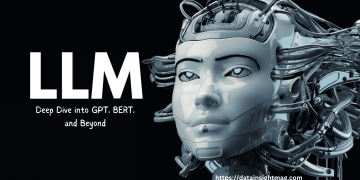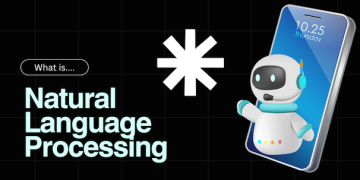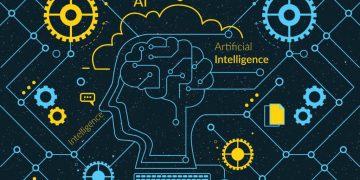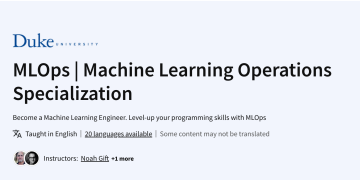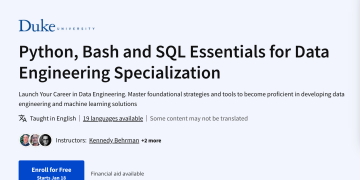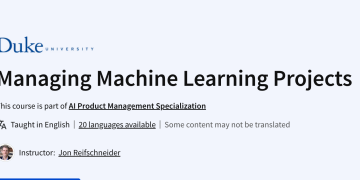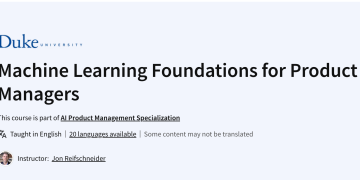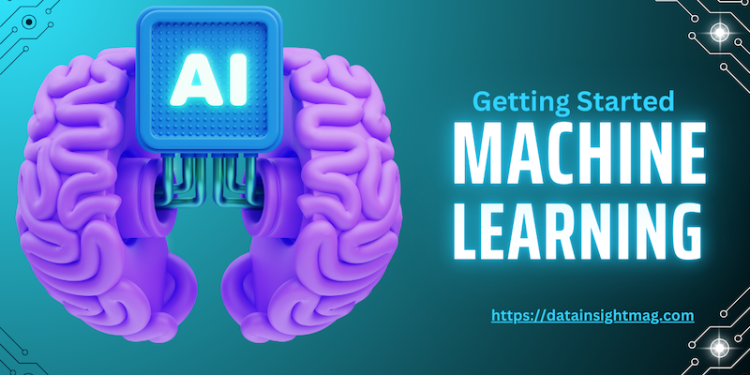Imagine waking up in a world where your refrigerator knows exactly what groceries you need, your email can sort itself into categories without you lifting a finger, and your favourite online store suggests items that you didn’t even know you wanted but now must have. Welcome to the world of Machine Learning (ML), where algorithms learn from data and help make our lives more efficient, personalized, and insightful. If you’ve ever wondered how to dive into this fascinating field, this guide is for you.
What is Machine Learning?
First things first, what exactly is machine learning? In simple terms, machine learning is a subset of artificial intelligence (AI) that enables computers to learn from data and make decisions without being explicitly programmed. Think of it as teaching a computer to recognize patterns and make predictions based on those patterns.
For example, when you use a streaming service like Netflix, machine learning algorithms analyze your viewing habits and suggest shows or movies you might like. Or when you type an email, ML helps predict what you’re going to write next. Cool, right?
Why Should You Learn Machine Learning?
The applications of ML are vast and varied, making it one of the most exciting fields to get into today. From improving healthcare with predictive diagnostics to enhancing customer experiences with personalized recommendations, ML is at the forefront of innovation. Additionally, as more industries recognize the potential of ML, the demand for skilled professionals in this field is soaring. Learning ML can open doors to a plethora of career opportunities and equip you with skills that are highly sought after in today’s tech-driven world.
The Building Blocks of Machine Learning
Before we dive into the practical steps of getting started with ML, it’s essential to understand its foundational concepts.
- Data: Data is the lifeblood of ML. It’s what algorithms learn from. The more relevant and high-quality your data, the better your models will perform.
- Algorithms: These are mathematical constructs that learn from the data. There are various types of ML algorithms, each suited to different types of tasks.
- Models: A model is the result of your algorithm learning from the data. It’s what you use to make predictions or decisions based on new data.
- Features: Features are individual measurable properties or characteristics of the data. Choosing the right features is crucial for model performance.
- Training and Testing: To build a reliable model, you need to train it on a portion of your data and test it on another to evaluate its performance.
Getting Started: The Basics
Before jumping into coding, it’s important to understand some fundamental concepts.
1. Types of Machine Learning
There are three main types of machine learning:
- Supervised Learning: Here, the algorithm learns from labelled data. Think of it as learning with a teacher. For example, you have a dataset of house prices (features) and their corresponding prices (labels). The algorithm learns the relationship between the features and the prices to predict the price of a new house.
- Unsupervised Learning: In this type, the algorithm learns from unlabeled data. There are no correct answers or teachers. The goal is to identify hidden patterns or structures. Clustering is a common technique in unsupervised learning, where similar data points are grouped together.
- Reinforcement Learning: This is like learning through trial and error. The algorithm learns by interacting with an environment and receiving feedback in the form of rewards or punishments. It’s widely used in game playing and robotics.
2. Key Concepts
- Dataset: A collection of data points used for training and testing the model.
- Features: The input variables used to make predictions.
- Labels: The output or target variable in supervised learning.
- Model: The mathematical representation of the data.
- Training: The process of teaching the model using the dataset.
- Testing: Evaluating the model’s performance on unseen data.
3. Common ML Algorithms for Beginners
Here are some ML algorithms that are ideal for beginners to start with:
- Linear Regression: Used for predicting continuous values, such as house prices or stock prices. It establishes a relationship between input features and a continuous output variable.
- Logistic Regression: Despite its name, it’s used for binary classification problems, such as spam detection or medical diagnosis.
- Decision Trees: These are intuitive and easy-to-visualize models used for both classification and regression tasks.
- k-Nearest Neighbors (k-NN): A simple algorithm used for classification and regression that makes predictions based on the closest data points in the training set.
- Support Vector Machines (SVM): Powerful for both linear and non-linear classification tasks, SVMs find the optimal boundary between classes.
- k-Means Clustering: An unsupervised learning algorithm used for clustering data into groups based on feature similarity.
Step-by-Step Guide to Your First ML Model
Now that you have a basic understanding, let’s build your first machine-learning model. We’ll use Python, which is the go-to programming language for ML due to its simplicity and extensive libraries.
Step 1: Set Up Your Environment
First, you need to set up your environment. Install Python and Jupyter Notebook, which is an interactive coding environment that makes it easy to write and run code. You can install Jupyter using the following command:
pip install notebookStep 2: Import Libraries
Python has several libraries for machine learning. The most popular ones are NumPy (for numerical computations), Pandas (for data manipulation), Matplotlib (for plotting), and Scikit-learn (for ML algorithms). Let’s import them:
import numpy as np
import pandas as pd
import matplotlib.pyplot as plt
from sklearn.model_selection import train_test_split
from sklearn.linear_model import LinearRegressionStep 3: Load Your Dataset
For this guide, we’ll use a simple dataset – the Boston Housing dataset, which contains information about houses in Boston and their prices. You can load the dataset directly from Scikit-learn:
from sklearn.datasets import load_boston
boston = load_boston()Step 4: Explore the Data
Take a look at the data to understand its structure:
print(boston.keys())
print(boston.DESCR) # Description of the dataset
print(boston.data.shape) # Shape of the data
print(boston.feature_names) # Feature namesStep 5: Prepare the Data
Convert the data into a Pandas DataFrame for easier manipulation:
df = pd.DataFrame(boston.data, columns=boston.feature_names)
df['PRICE'] = boston.target
print(df.head())Step 6: Split the Data
Split the data into training and testing sets. The training set is used to train the model, and the testing set is used to evaluate its performance.
X = df.drop('PRICE', axis=1) # Features
y = df['PRICE'] # Target variable
X_train, X_test, y_train, y_test = train_test_split(X, y, test_size=0.2, random_state=42)Step 7: Train the Model
We’ll use a simple linear regression model to predict house prices.
model = LinearRegression()
model.fit(X_train, y_train)Step 8: Make Predictions
Now, let’s make predictions on the test data and compare them with the actual prices.
y_pred = model.predict(X_test)
plt.scatter(y_test, y_pred)
plt.xlabel('Actual Prices')
plt.ylabel('Predicted Prices')
plt.title('Actual vs Predicted Prices')
plt.show()Step 9: Evaluate the Model
Finally, evaluate the model’s performance using metrics like Mean Absolute Error (MAE), Mean Squared Error (MSE), and R-squared score.
from sklearn.metrics import mean_absolute_error, mean_squared_error, r2_score
mae = mean_absolute_error(y_test, y_pred)
mse = mean_squared_error(y_test, y_pred)
r2 = r2_score(y_test, y_pred)
print(f'MAE: {mae}')
print(f'MSE: {mse}')
print(f'R-squared: {r2}')And there you have it! You’ve built your first machine-learning model. Congratulations!
What’s Next?
Now that you’ve got a taste of machine learning, here are a few next steps to continue your journey, learning ML can be challenging, but here are some tips to help you overcome common hurdles:
- Conceptual Understanding: Focus on understanding the concepts rather than just coding. Knowing the “why” behind algorithms is crucial.
- Practice, Practice, Practice: Regular practice through projects and challenges will help solidify your knowledge and skills. Try working with different datasets to gain more experience. Websites like Kaggle offer a variety of datasets and competitions.
- Stay Updated: ML is a rapidly evolving field. Follow blogs, research papers, and online courses to stay updated with the latest developments.
- Learn More Algorithms: Explore other ML algorithms like decision trees, random forests, and support vector machines.
- Deep Learning: Dive into deep learning and neural networks for more complex tasks like image and speech recognition.
- Join the Community: Participate in online forums and communities like Stack Overflow, Reddit, and ML-specific groups to learn from others and share your knowledge.
Embarking on the journey to learn Machine Learning is like unlocking a new realm of possibilities. It requires dedication, curiosity, and a willingness to experiment and learn from failures. As you build your skills, you’ll be able to create models that can analyze data, make predictions, and ultimately drive innovation in various fields. Remember, every expert was once a beginner, and with persistence, you’ll be well on your way to mastering Machine Learning. Happy learning!


